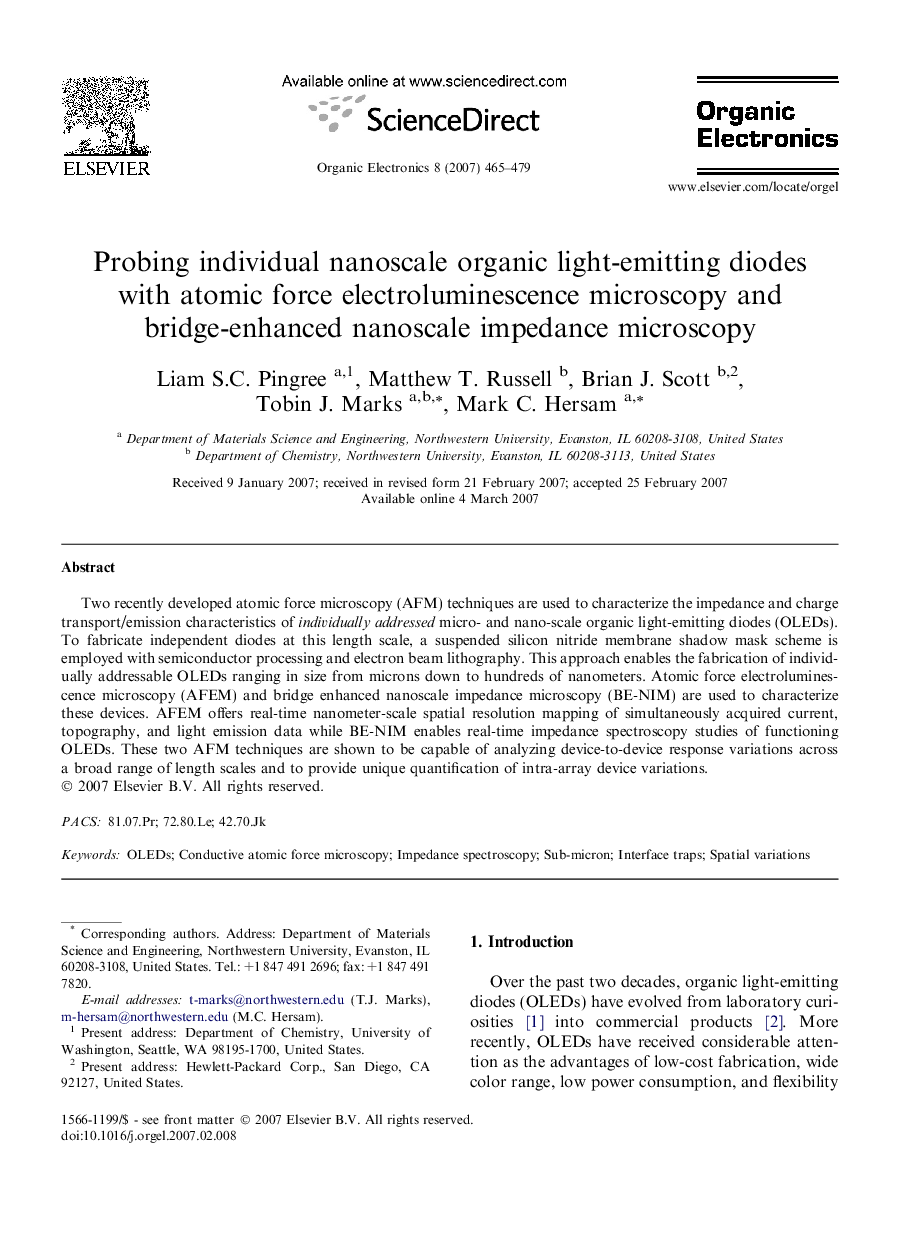| Article ID | Journal | Published Year | Pages | File Type |
|---|---|---|---|---|
| 1268632 | Organic Electronics | 2007 | 15 Pages |
Two recently developed atomic force microscopy (AFM) techniques are used to characterize the impedance and charge transport/emission characteristics of individually addressed micro- and nano-scale organic light-emitting diodes (OLEDs). To fabricate independent diodes at this length scale, a suspended silicon nitride membrane shadow mask scheme is employed with semiconductor processing and electron beam lithography. This approach enables the fabrication of individually addressable OLEDs ranging in size from microns down to hundreds of nanometers. Atomic force electroluminescence microscopy (AFEM) and bridge enhanced nanoscale impedance microscopy (BE-NIM) are used to characterize these devices. AFEM offers real-time nanometer-scale spatial resolution mapping of simultaneously acquired current, topography, and light emission data while BE-NIM enables real-time impedance spectroscopy studies of functioning OLEDs. These two AFM techniques are shown to be capable of analyzing device-to-device response variations across a broad range of length scales and to provide unique quantification of intra-array device variations.
